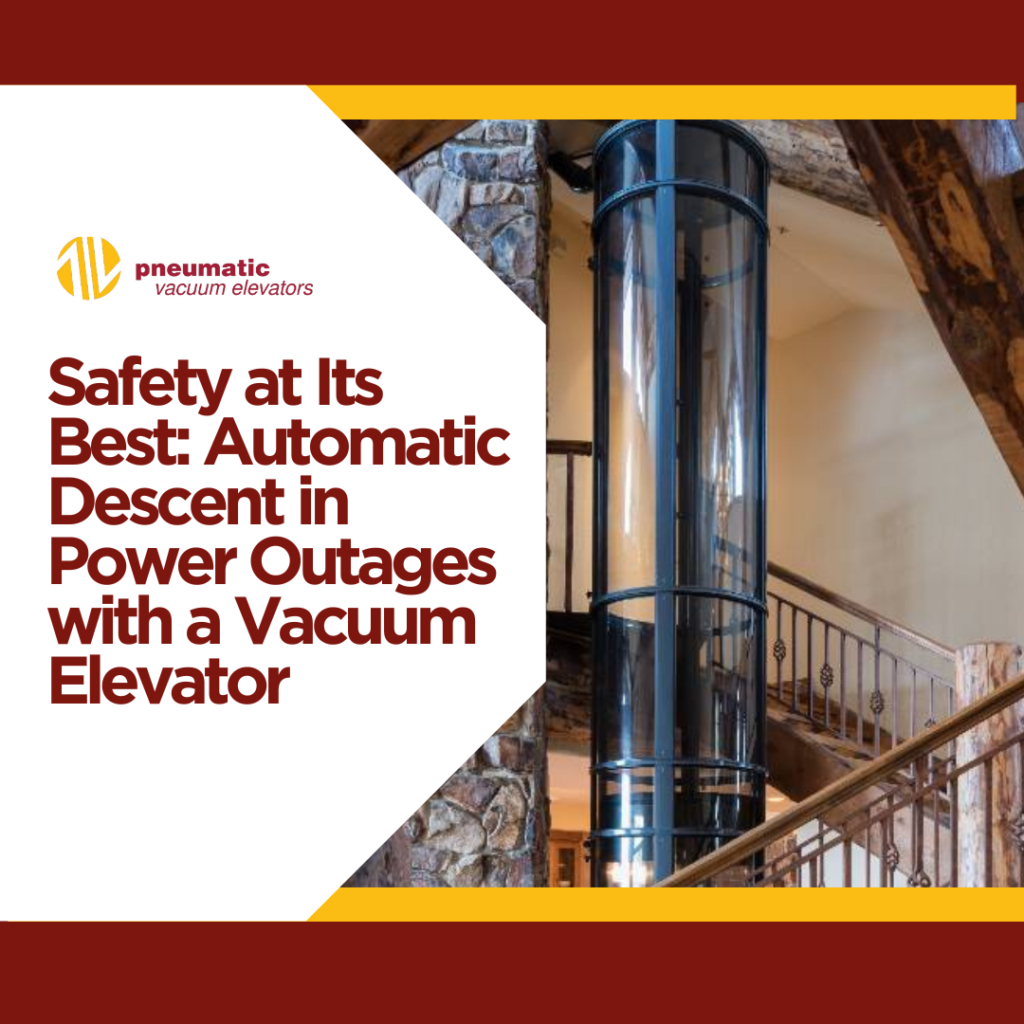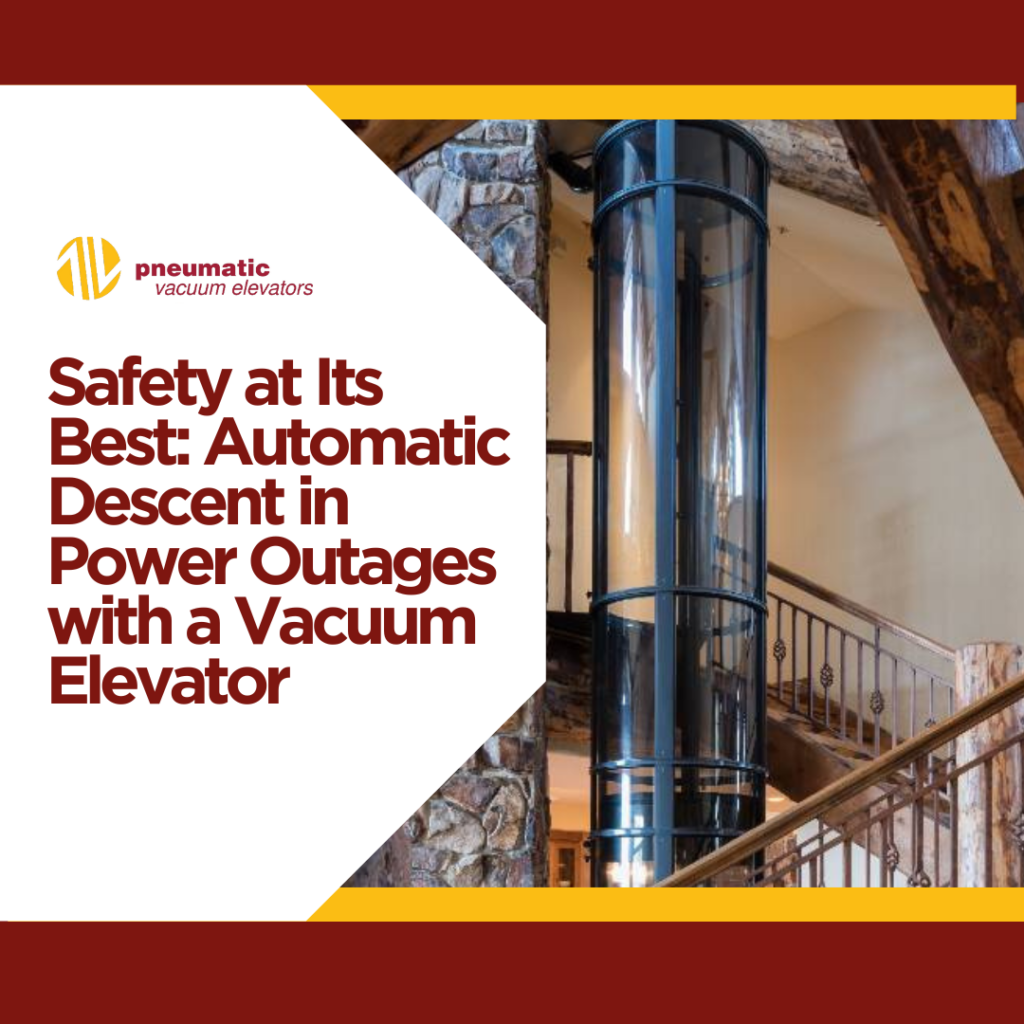
When it comes to residential elevators, safety is of utmost importance. Our vacuum elevators are equipped with advanced safety features, including PVE car locks, that ensure secure vertical transportation. However, we will delve into the mechanisms of our residential elevators, emphasizing their role in providing a safe experience for all passengers.
PVE Car Locks for Secure Anchoring
One of the standout vacuum elevator safety features of our residential elevators is the inclusion of PVE car locks. These locks play a critical role in firmly anchoring the cabin on each level. During ascent, the car locks remain closed. Once the cabin reaches the desired landing, the car lock engages and anchors the cabin in the columns of the lift.
As a result, our elevators always stop precisely at the desired level, facilitating easy entry and exit for passengers.
Ensuring Precise Leveling and Passenger Accessibility
Thanks to the implementation of PVE car locks, our residential elevators guarantee precise leveling at each floor. This feature greatly benefits passengers, as it ensures a smooth and stable platform for safe and easy entry and exit. Consequently, passengers, particularly those with mobility issues, can navigate the elevator confidently and without any inconvenience.
Summary:
- PVE car locks are responsible for firmly anchoring the cabin on each level.
- During ascent, the car locks remain closed and engage once the cabin reaches the desired landing.
- The locks anchor the cabin in the columns of the structure, ensuring precise leveling for easy passenger entry and exit.
Reliability and Safety During Power Outages
In the unlikely event of a power failure, our residential elevators are designed with passenger safety as the utmost priority. Leveraging our unique operational approach, the cabin always descends to the ground floor at a safe speed. This process is made possible by the incorporation of mechanical door locks, which operate independently of the power supply. As a result, even during power outages, passengers can always exit the elevator safely.
Dependable Descending Mechanism
To ensure a smooth transition during descent, our residential elevators employ a distinctive descending mechanism. Before descending, the cabin is elevated a few inches to close and release the car latches, thereby allowing the car to descend freely. This thoughtfully designed process guarantees a seamless and efficient operation of the elevator, providing passengers with a reliable and secure experience.
Summary:
- Our residential elevators have a unique operational approach that ensures safe descent to the ground floor during power outages.
- Mechanical door locks allow passengers to exit the elevator even when there is a power failure.
Mechanical Safety Brakes for Vacuum Loss
In the rare event of a vacuum loss in our air-driven residential elevators, additional safety measures come into play. These elevators are equipped with mechanical safety brakes that activate if a loss of vacuum is detected over the top seal. The mechanical safety brakes engage within the first 5 cm of free fall, firmly anchoring the cabin to the columns of the elevator structure.
Secure Anchoring in Case of Vacuum Loss
The presence of mechanical safety brakes serves as an integral part of our safety system. If a vacuum loss occurs, the cabin immediately anchors to the elevator structure, preventing any further descent. This reliable safety feature ensures the utmost security for passengers, providing peace of mind even in the most extreme circumstances.
Summary:
- Our air-driven residential elevators are equipped with mechanical safety brakes.
- These brakes engage within the first 5 cm of free fall in case of a vacuum loss, firmly anchoring the cabin to the elevator structure.
With a comprehensive array of safety features, our residential elevators have rightfully earned the reputation as “the world’s safest residential elevator.” The incorporation of PVE car locks, mechanical door locks, and mechanical safety brakes guarantees secure vertical transportation for all passengers. Whether it’s achieving precise leveling, maintaining reliable operation during power outages, or ensuring protection in the event of a vacuum loss, our elevators prioritize passenger safety above all else.
FAQ: Frequently Asked Questions
Q1: What happens if there is a power failure in a vacuum elevator?
In the event of a power failure, our elevators always descend to the ground floor at a safe speed, allowing passengers to exit using mechanical door locks.
Q2: What happens in the event of a vacuum loss in a vacuum elevator?
If a vacuum loss occurs, mechanical safety brakes engage within the first 5 cm of free fall, anchoring the cabin to the elevator structure.
Q3: Are PVE car locks responsible for precise leveling in a vacuum elevator?
Yes, PVE car locks play a crucial role in ensuring precise leveling of the cabin on each floor, facilitating easy passenger entry and exit.
Q4: How does the descending mechanism work in a vacuum elevator?
Before descending, the cabin is elevated a few inches to close and release the car latches, allowing the cabin to descend smoothly.
Q5: What safety features make vacuum elevators secure for passengers?
Choose our vacuum elevators for your residential needs and experience unparalleled safety and peace of mind. Contact us today to learn more!








